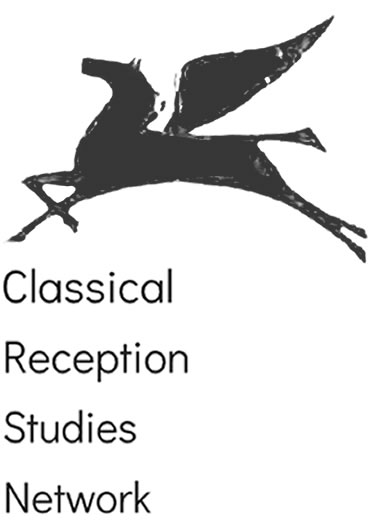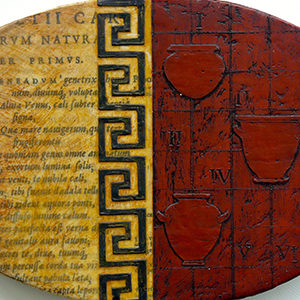by Anastasia Bakogianni, Lecturer in Classical Studies, Massey University (Auckland campus)
How have New Zealanders received the classical world? How have they adapted and transformed it for use in their own culture and the arts? Why do they feel this deep connection with ancient Greece, Rome, and Egypt? These are the fundamental questions that Classical World New Zealand, a new project based at Massey University, seeks to illuminate.

When I arrived on the beautiful shores of Aotearoa (the Māori name for New Zealand) last year I was curious to learn more about how New Zealanders and New Zealand based practitioners responded to the classical world. Having worked for many years for the CRSN and been an interviewer for Practitioners’ Voices in Classical Reception and Classics Confidential I was already aware of the existence of such receptions. But I was still surprised by the richness and variety of these connections, and I am happily looking forward to discovering more. This is surely yet more proof of the ongoing impact of the classical world on our own modern global culture.
A guiding principle in my own work, instilled in me by my mentor Professor Lorna Hardwick, is the importance of an open dialogue with practitioners. As a ‘receptionista’ I study creative adaptations of the classics in a variety of media, but rather than simply imposing my own view on the material I want to hear what the artists themselves have to say about their motivations and creative processes. Reception is a complex process that deserves close study and an integral part of that investigation should be the practitioner(s)’ own perspective. With this in mind I started looking for Kiwi artists with a strong connection to the classical world. With the help of my colleagues and the Internet I was soon well on my way.
Among the first people who agreed to take part in the project was Michael Hurst, a well-known actor, director and playwright. Little did I imagine, when as a student in the U.K. I watched him play Iolaus in Hercules: The Legendary Journeys (1995-99) and Xena: Warrior Princess (1995-2001) that many years later I would get to meet him in person; or that he would be a former Massey student who has directed a number of Greek plays on the New Zealand stage, most recently Aristophanes’ Lysistrata (2015) – not to mention adapting one of the most famous stories from Greek tragedy in his House of Atreus (1990) and directing several episodes of Starz’s Spartacus television series. Talking with this multi-talented practitioner was one of the highlights of my work on the project so far, and I look forward to the public version of this conversation when he visits our Auckland campus on the 4th of April (see the ‘news’ section of our website for details).

Another enthusiastic early contributor to Classical World New Zealand was Vicky Yiannoutsos, a New Zealand born Greek artist and filmmaker. As a Greek, I am always interested in how the classical past is received and adapted in the modern state of Greece and by the Greek diaspora. I am therefore most grateful to my colleague Gina Salapata for introducing me to this wonderful filmmaker who both teaches and practices her art. Learning more about her work over the course of several conversations proved most stimulating, in particular her documentary Visible Passage (1987) in which she uses the myth of Persephone as a metaphor for the migrant experience. Like Persephone, forced to divide her time between the underworld and the world of light, migrants and their descendants often feel caught between two worlds. In her film, Vicky movingly explores her family’s personal history divided by the more than 17,709 km that separate Greece and New Zealand (this is the shortest distance as the crow flies and yes, I did look this fact up online when I first arrived on these Antipodean shores).
Other interviewees currently available on our website are Kelly Harris, director of The Book Club (2016), a new play inspired by Euripides’ Medea and artist Raemon Rolfe (co-interviewed by Gina and myself) who uses Greek, Roman and Egyptian motifs in her work. If you want to learn more about a modern artist using an ancient technique (the encaustic) to produce her art this is the one for you. Future interviews include Professor John Davidson on his Greek-themed poetry, Dr. Simon Perris on his translations of classical plays and famous composer John Psathas on his musical appropriations of ancient Greek music and themes. But, as this is an ongoing project there will be many more to come in the future, illustrated by audio-visual material. We will continue to add to the resources on our website so keep checking back or follow us on Twitter for updates. Our journey of discovery has just begun…

The Massey Classical Studies team (Anastasia, Gina, James and Jonathan) wants to share our discoveries so we created an open-access website: www.massey.ac.nz/classicalworldnz. The material we have gathered is organised according to ‘medium’. There are currently six main subsections to the website: Film, Literature, Music, Scholarship, Theatre, and Visual Arts. In addition, we also have two pages for News & Events and Further Resources. Please do get in touch, if you want to take part in our project. The only eligibility criterion for an interviewee is that you have to be based in New Zealand. But that does not mean we are not open to feedback and suggestions from the world beyond Aotearoa’s shores!
Contact details:
Project coordinator: a.bakogianni@massey.ac.nz
Twitter: @classicalnz

